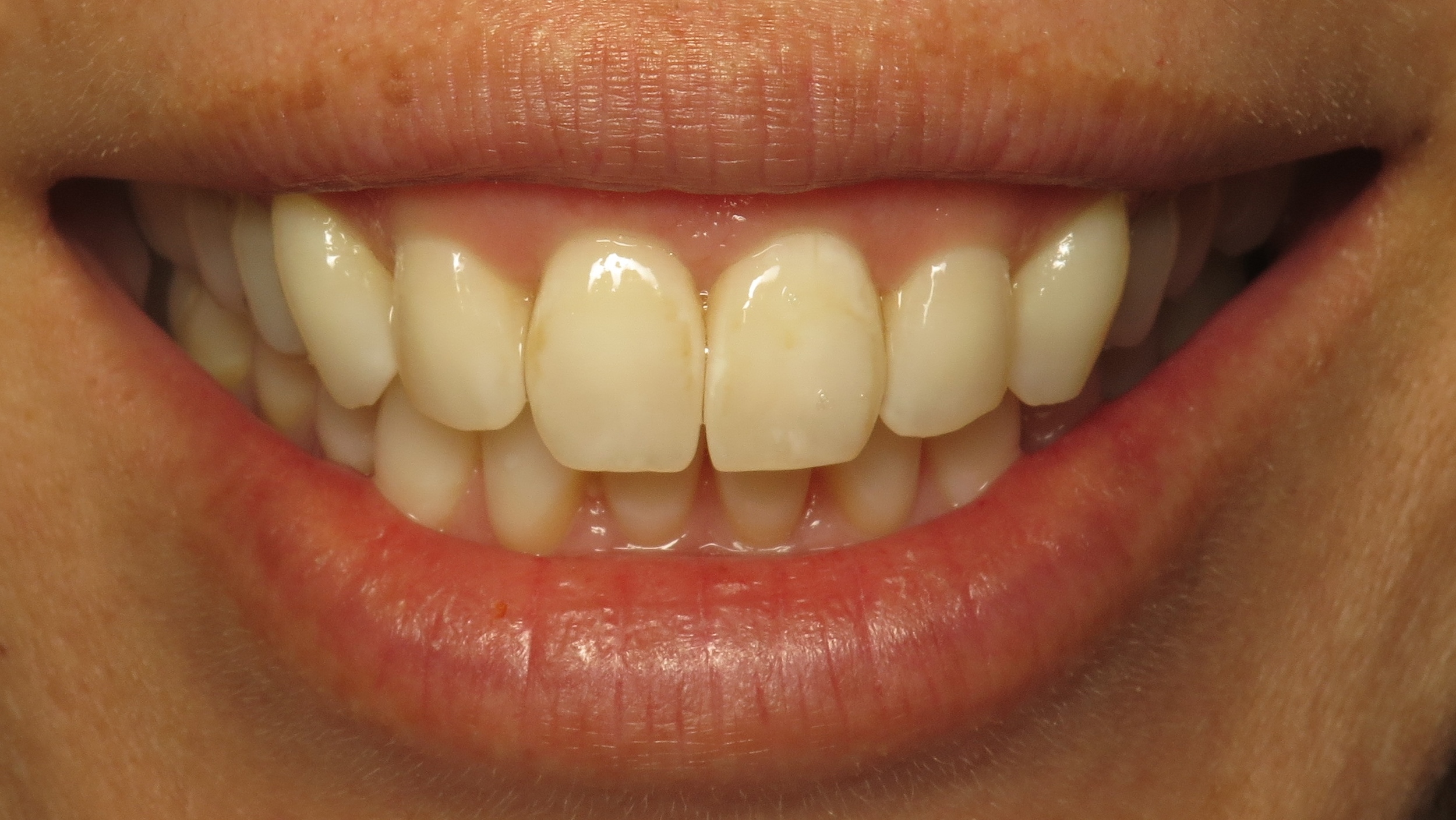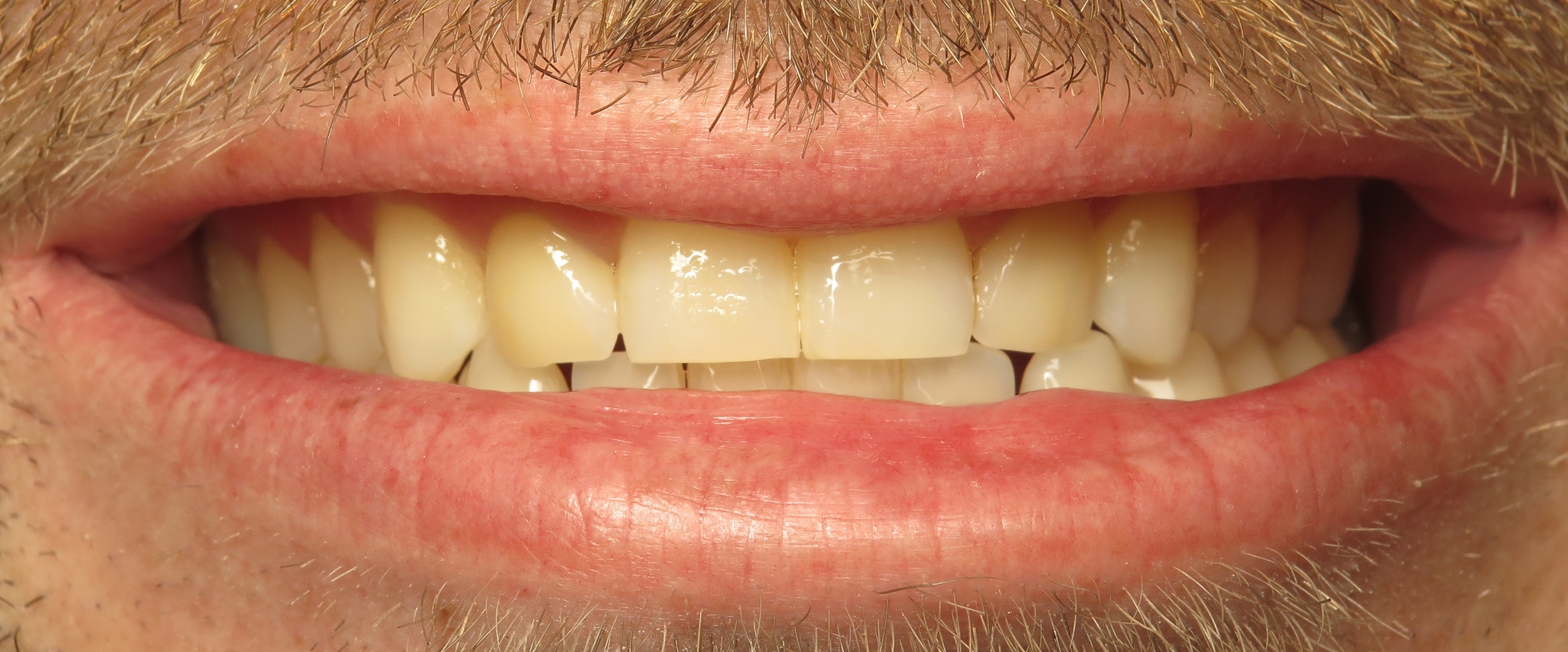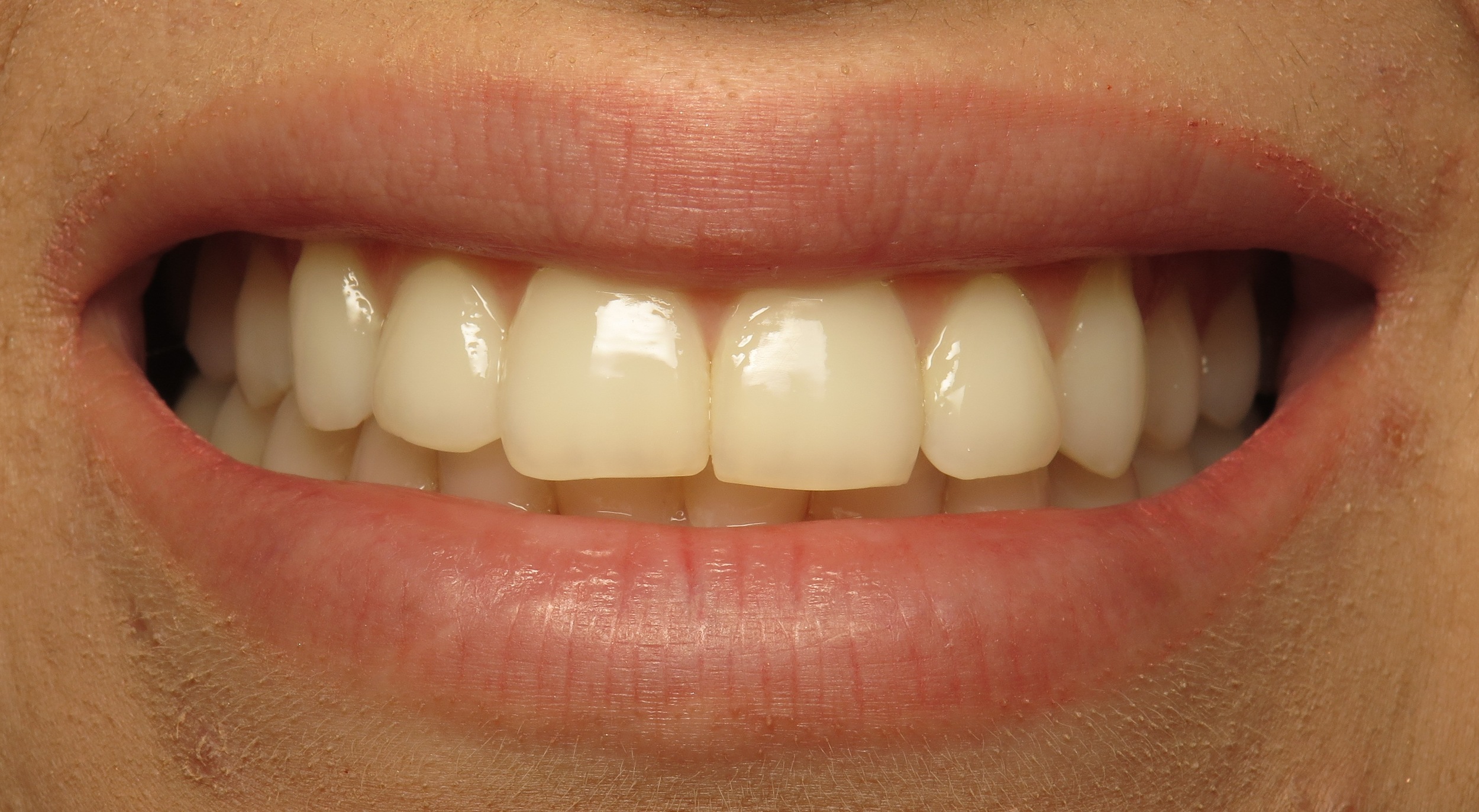Last month, we posted a blog article on The Golden Proportion, a set of dimensions based on ideal proportions found in nature. When it comes to the smile, these proportions are only one piece of the aesthetic puzzle. The position of the lips framing the teeth, the angulation of the teeth, and the location of the dental midline are all examples of factors that influence our interpretation of a pleasing smile. However, the golden proportion is an interesting feature to study, as it is so deeply rooted in mathematics. To better explain how the golden proportion helps define facial esthetics, we assembled a few real-life cases for you to examine!
Case 1



Central tooth width to length ratio: 74% (ideal is 75-80%)
Golden proportion ideal measurements based on a 2D picture:
- Central 1.618
- Lateral 1
- Canine 0.168
Golden proportion ideal measurements, assuming the central is ideal width:
- Central 7.4
- Lateral 4.6
- Canine 2.8
Comments:
Case 1 has centrals that follow an ideal width to length ratio at 74%. In evaluating the golden proportion, the laterals and canines are wider than ideal. The frame of the lips is much wider than in Case 2 or 3, so the gum tissue above the gum/tooth margin is very visible.
Case 2



Central tooth width to length ratio: 96% (ideal is 75-80%)
Golden proportion ideal measurements based on a 2D:
- Central 1.618
- Lateral 1
- Canine 0.168
Golden proportion ideal measurements, assuming the central is ideal width would be
- Central 8
- Lateral 4.9
- Canine 3.0
Comments:
Case 2 has centrals that are nearly 1:1 in the width to length ratio and have a square appearance. It appears that the centrals have some wear on the biting edge and that they could stand to be 1-2 mm longer. The laterals and canines are slightly wider than the golden proportion measurement. The patient's lips frame the overall smile so that hardly any of the biting edge or gum/tooth margin of the teeth show. Thus, the aesthetic discrepancies are less noticeable.
Case3
Central tooth width to length ration: 90% (ideal is 75-80%)
Golden proportion ideal measurements based on a 2D picture:
- Central 1.618
- Lateral 1
- Canine 0.168
Golden proportion ideal measurements, assuming central is ideal width:
- Central 9
- Lateral 5.6
- Canine 3.5
Comments:
In reviewing the three cases presented here, Case 3 has nearly exact golden proportions. The central tooth width to length ratio is slightly greater than ideal at 90%, but the upper lip covers enough of the gum/tooth margin of the centrals that this ratio isn't as relevant in evaluating aesthetics. Also, the upper and lower midlines are slightly off center from one another, but the upper central midline is perpendicular to the floor of the mouth and centered with the patient's nose. Thus, the midline is aesthetic even though the upper and lower midlines don't match each other.




